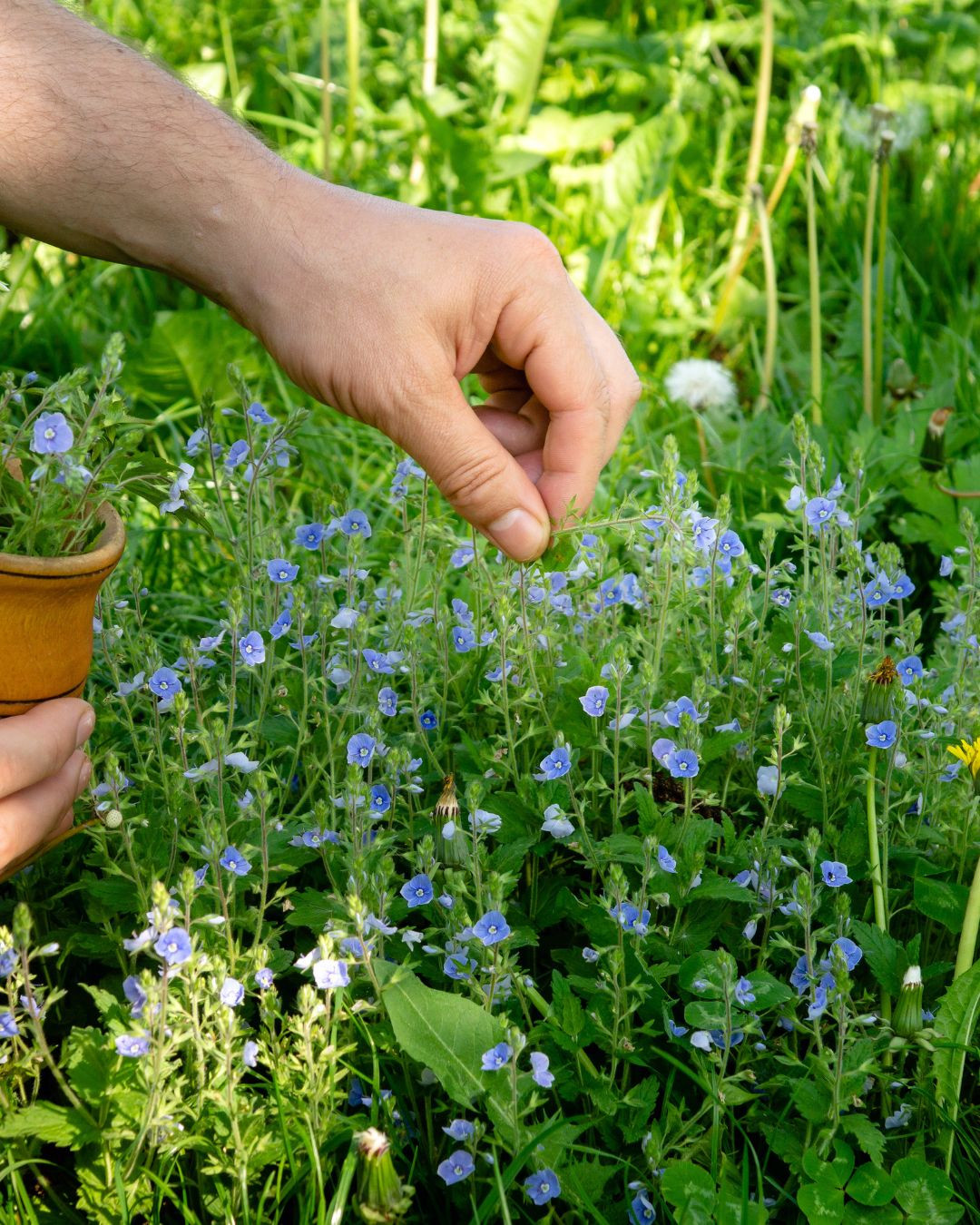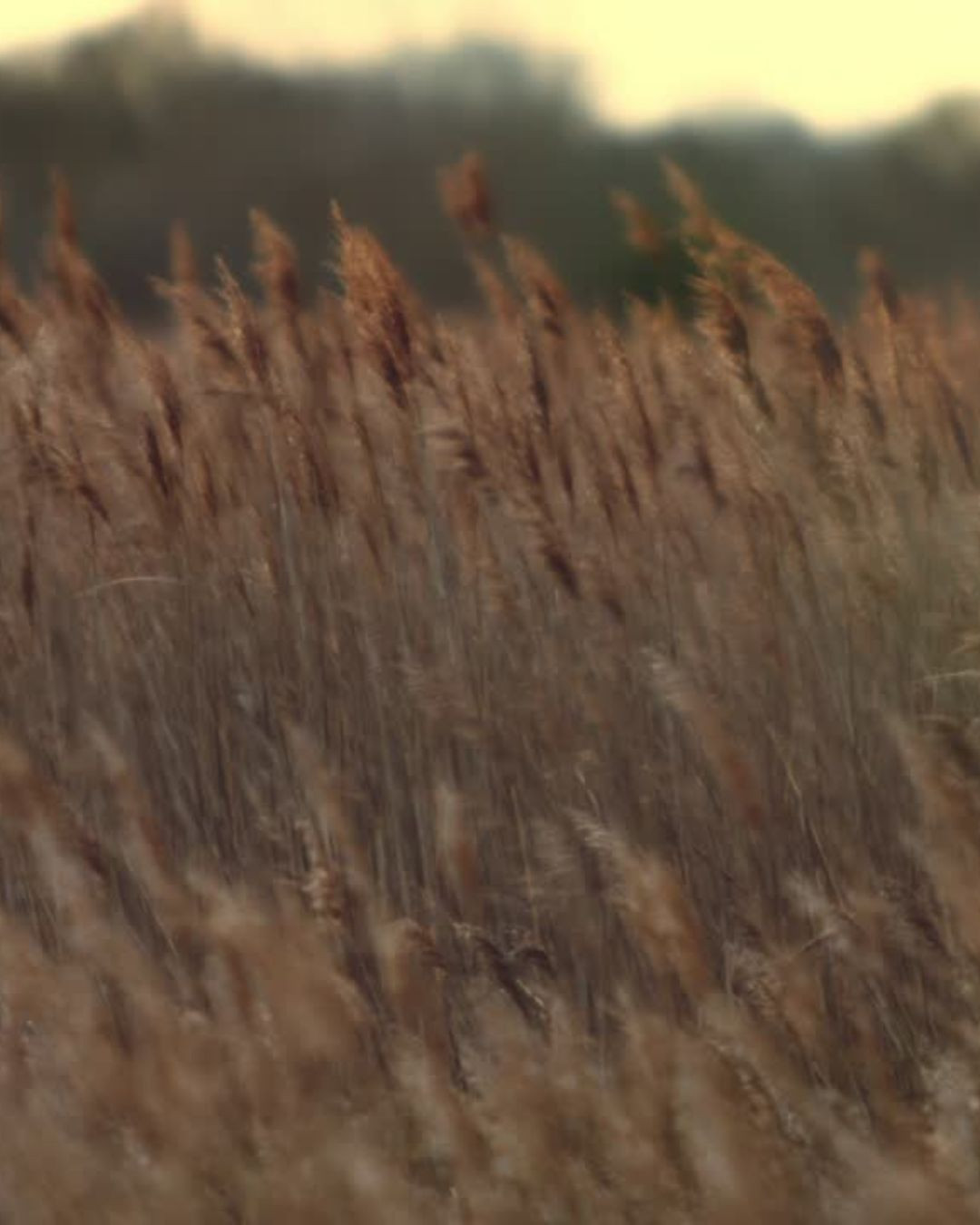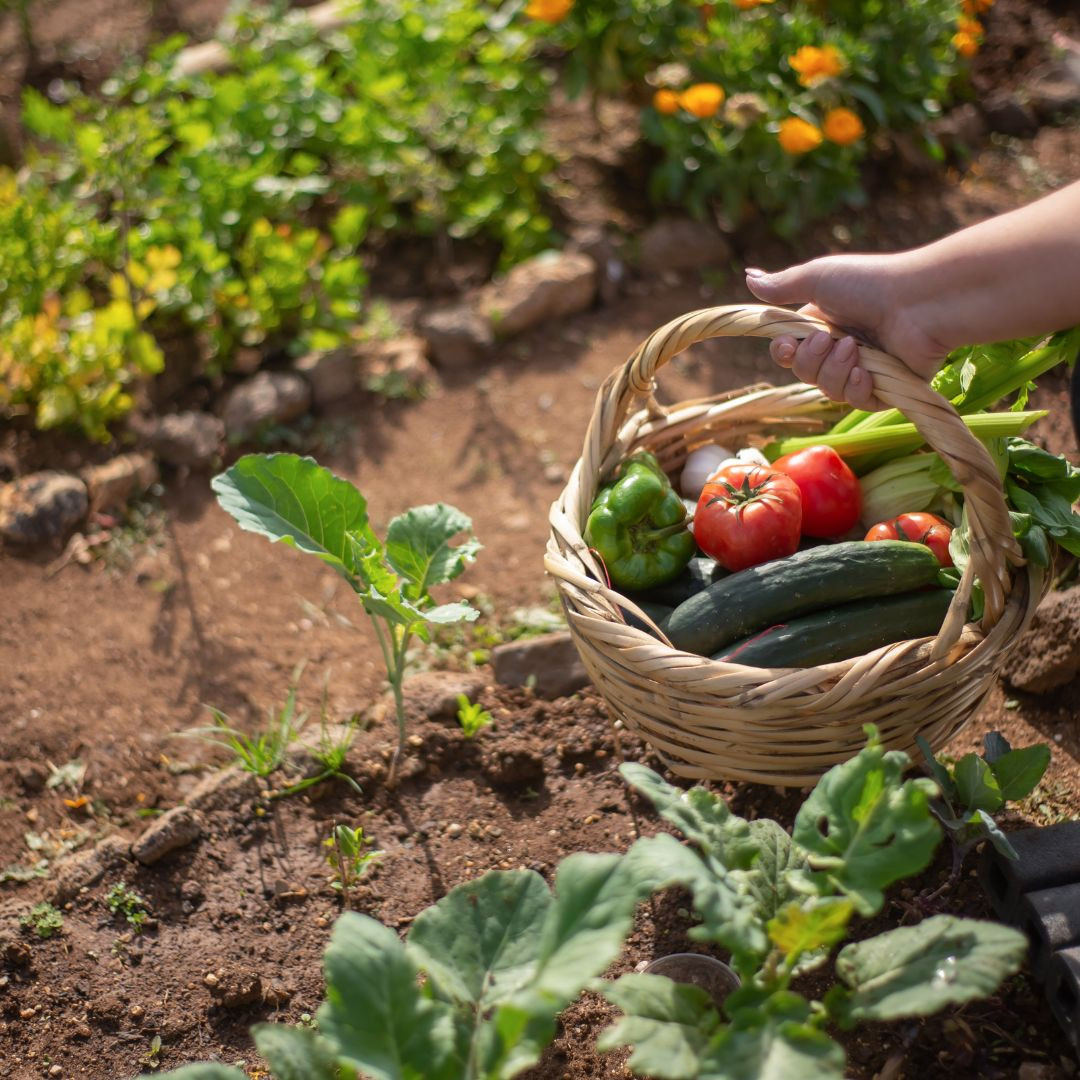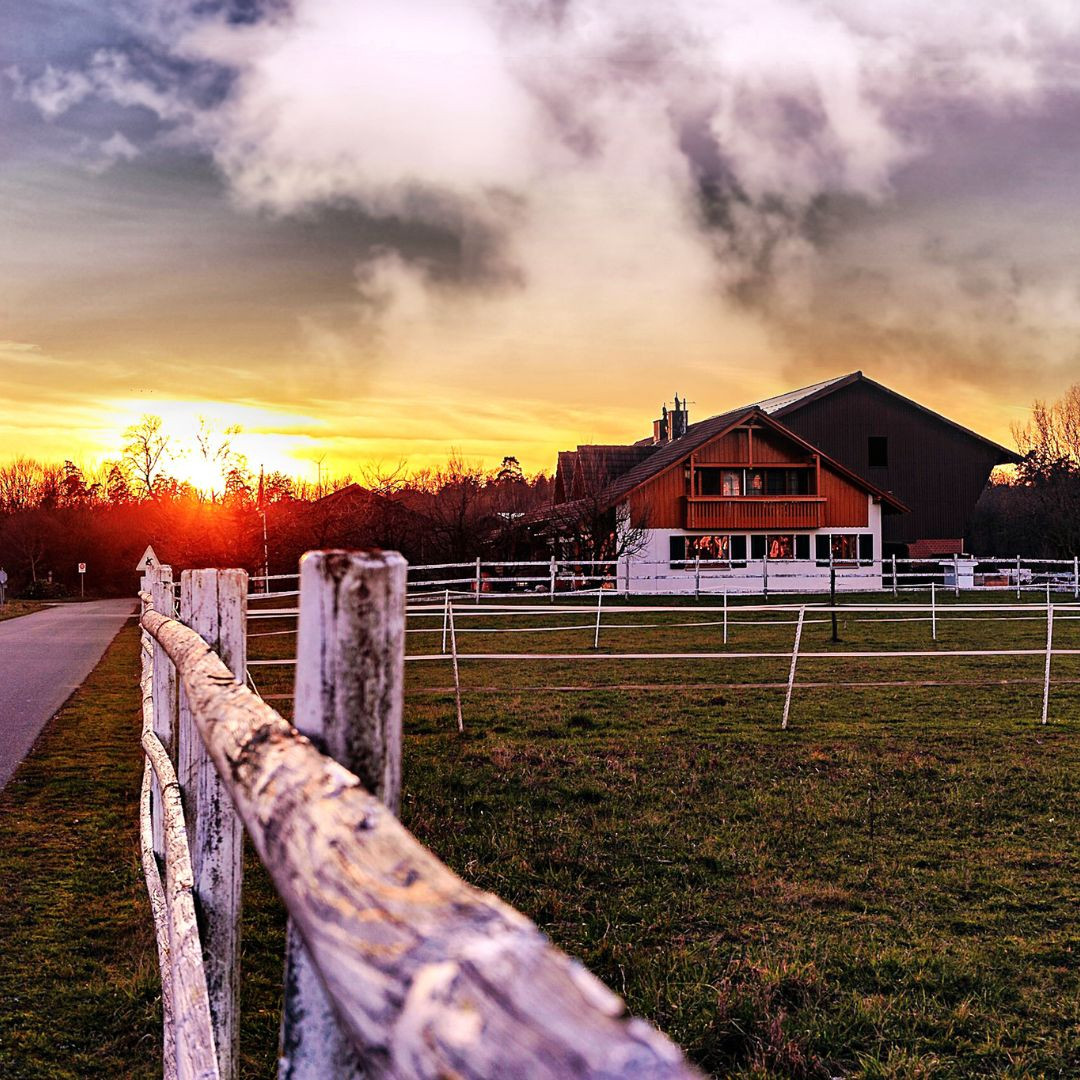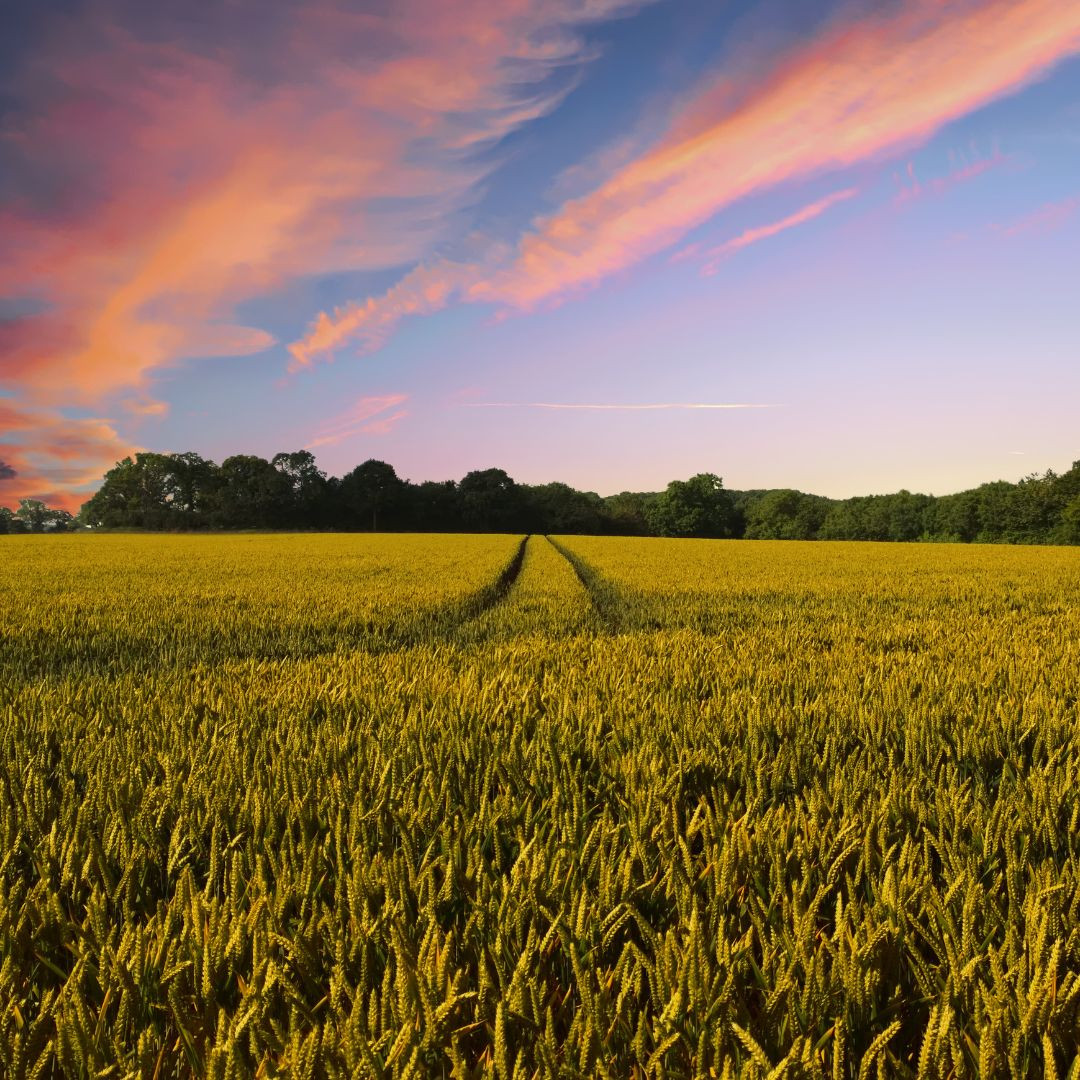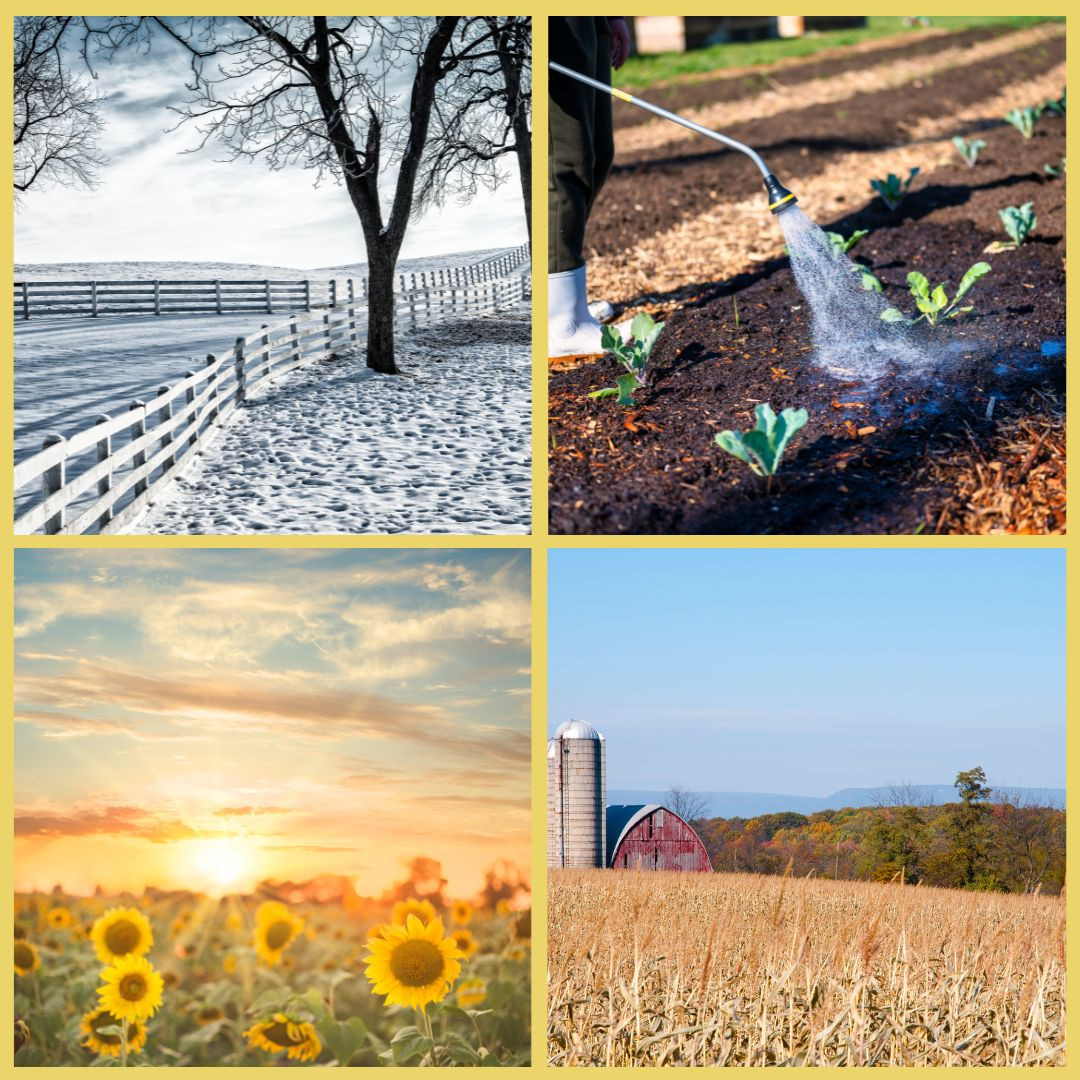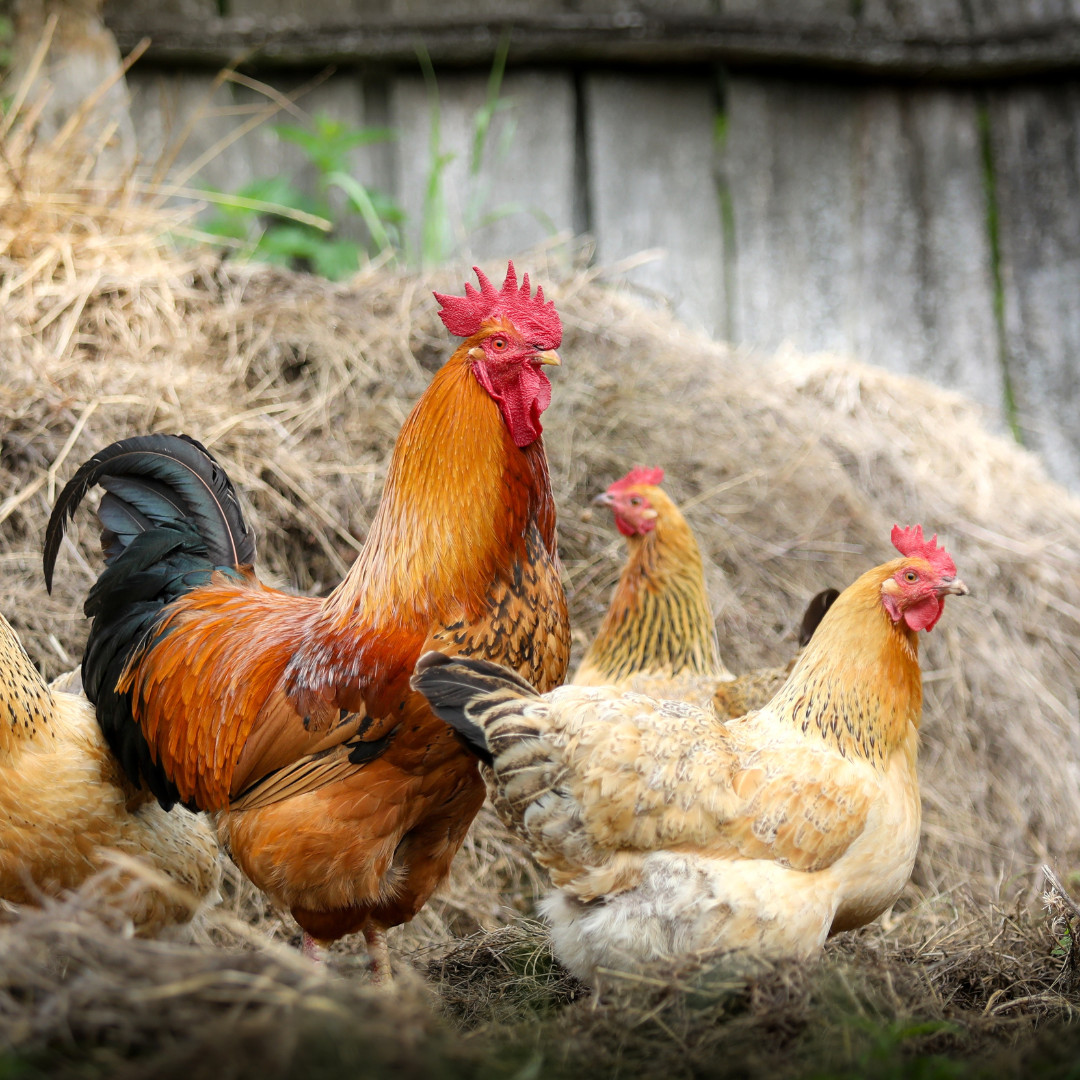
This post may contain affiliate links, which means that I may receive a commission if you make a purchase using these links, with NO additional cost to you.
Chickens are a forgiving livestock, however there are a few things to keep in mind when selecting the prefect chicken breed for your homestead. Some important things to consider are meat vs egg production, broody tendencies, and heat/cold tolerance. Below I’ll highlight some of each and the popular breeds within each category.
Meat or Egg production? Or both?
This is a big factor. Chicken breeds today have been selected for more meat producing genetics or egg production. There are a few breeds that fall into both categories, called dual purpose.
The most popular meat breed is the cochins. They are fast growers and fatten in about 8-10 weeks. 99% of the chicken raised commercially are the cochin breed. However, a breed with rising interest among homesteaders is the Freedom Rangers. They are more agile and smart than the Cochin but do take about 12-14 weeks to fatten.
Chickens that are selected for more egg production tend to lay heavy from about 6 months to 2 years, then they taper off, still laying, but not daily anymore. Popular breeds include Golden Comet, Sapphire Gem, ISA Browns, Australorps (egg record holders), Plymouth Rock, Wyandotte, Ameraucana, and Welsummer.
The Welsummer is a good year-round layer, even if they don’t lay the most eggs, and they handle heat and cold well. Australorps are the record holders, but don’t tend to like the heat. I do have one Australorp hen who insists on raising at least 1 clutch each year since turning 3. The Wyandotte is a good layer and also thrives in cold northern winters, but doesn’t like the extreme heat. They can survive, just may not lay well for you. They also don’t tend to go broody. The Ameraucana breed lays eggs from cream to bright blue color. They will slow down in the winter, but still lay eggs.
Breeds that are considered dual purpose are both good egg layers and can be good meat birds. These tend to not be the best in either category, but they are a happy middle if you want to raise all your own birds. Two of my favorite dual breeds are Buff Orpingtons and Sussex/Speckled Sussex. Both lay eggs well and are a bigger breed which would produce a decent amount of meat. Buff Orpingtons are said to have tendency to be broody which is a plus if you want a hen to raise chicks for you.
In general, heavy breeds tend to not like the heat as much and can slow laying. However, they also tend to tolerate the cold weather a little better. If you want to avoid broody hens, go with a breed that tends to not be broody. Overall, make sure to match your chickens to your environment and you will be happy with your chickens’ productions.
As I've grown in my journey as an entrepreneur, mom, gardener, and livestock owner, I struggled to find a planner that met my needs and kept me organized. So I MADE MY OWN. You can take a look at it on the link blow and buy it on amazon below
Don't want the whole calendar part? I got you! I pulled the gardening and animal care pages out and put them in a book all their own.
Wanting a community to lean into? Join the FREE Helping Your Family Homestead for Food group! This community is for the Mommas, looking to stay home and raise their kids, but unsure how to keep everyone fed and make ends meet. I share tips from my journey from the office, to half the income and feeding my family from home, while maintaining good nourishing food. Tips include: gardening, bulk buying, caning,/preserving, livestock, homesteading, and home remedies. Your family is precious and this group is to help you gain the knowledge and tools to keep your family well and not reliant on outside professionals. Remedies and tips are easy and simple for the busy momma, time is precious after all, including pregnancy, birth, young kids, and illness. Trust your Momma gut again! This community offers the resources + community you need to help get started on your journey and prepare for whatever future you envision.
Starting to garden doesn't have to be hard! I gathered all the tips I've learned over my gardening learning curve and made them into a simple course to jump start your gardening your life.
Supporting Your Family Naturally From the Inside Out community!! This community is for the Mommas, looking to Support Your Family from Nature for Wellness. Tips range from nutrition, herbals, detoxing, natural cleaning, and essential oils. Basically all the things I’ve learned slowly over the past 5+ years if my journey. We have moved off Facebook, so to better serve our community and be able to discuss openly option for providing for your family in the best way possible.
Join the FREE Community
Join the FREE Community
I've had 3 very different pregnancies. After the first traumatic birth, I learned better and how to care for my body naturally and prevent common pregnancy and birth problems before they arise. This quick course will get you the tools you need to have a naturally healthy pregnancy, labor, and delivery. My first pregnancy I had a normal western medicine all the things pregnancy. My second? I flipped to completely natural, no medicine. Bonus: Preventing Preeclampsia Without the Aspirin & Healing from Birth Trauma
Click here to get the stories straight to your email:
For more on wellness tips click here:
For more on homesteading on your budget click here:
For more simple DIY updates click here:
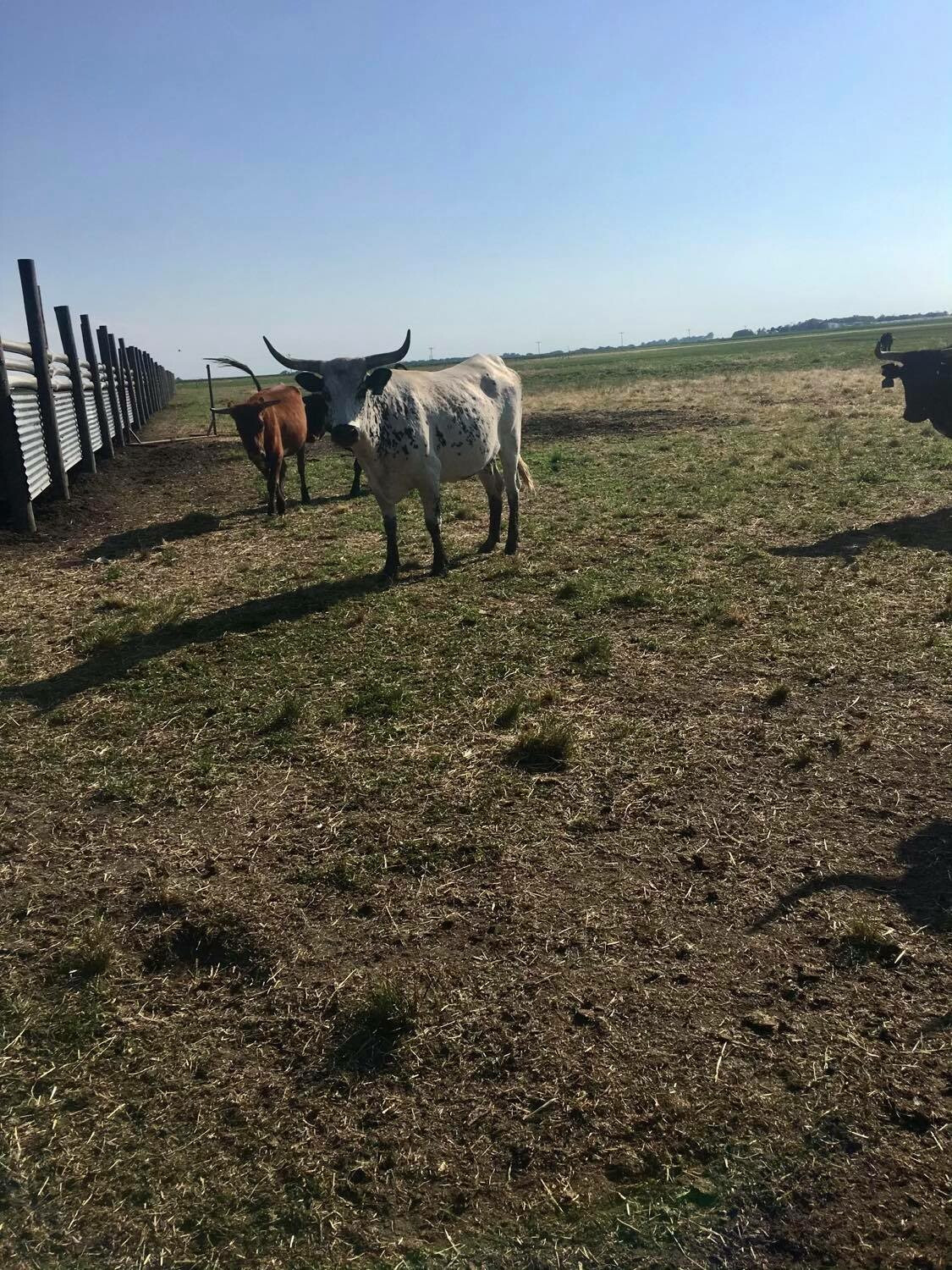
This post may contain affiliate links, which means that I may receive a commission if you make a purchase using these links, with NO additional cost to you.
Training livestock, cattle, sheep, pigs, goats, etc., for basic movement is actually fairly simple. There are a few things to consider keeping you safe and make the training simple for everyone.
First, safety. When working with any livestock it is best to wear closed toes shoes. The larger the animal, the more important your shoes are. When working with larger animals, like cows, you definitely want to invest in leather boots.
Next your biggest training tools. A bucket, some grain for starters, and repetition. Food is a very good motivator for animals. You will have to let them get their head in the bucket at least the first time, or pour the grain out for them, until they figure out the bucket means food. Once they make the connections, you can lead them about anywhere. You can also use a few rocks in a bucket in a pinch once they figure it out. Disclaimer this method works well with small groups. You get large groups of 20+ and it’s not the best method.
You can also train animals to move easily from pasture to pasture. Repetition is key here. The reward, food, is on the next side of the gate. When you move a large herd the same way every time, they quickly figure out what the ques are and often meet you at the gate.
Story time. Before I was at home with my kids, I worked with large herds of cattle, 100 was a small a group typically. Most of the time moving the group to the next pasture across the fence would be done with 1 person. We all moved them the same, with the same pattern, and call. When calves were in the group, we drove through the herd, from the gate, and made sure everyone was up. Hooked up the salt/mineral sled and slowly drove back through the herd calling for them. They quickly followed, knowing new grass was coming. By weaning even, the calves would come to a simple call, because they had been conditioned that new food was coming.
In summary, repetition is key when training animals. Their easy reward is food. Whatever you choose to use as your moving method, do it the same every time and they will quickly be moving without much effort.
As I've grown in my journey as an entrepreneur, mom, gardener, and livestock owner, I struggled to find a planner that met my needs and kept me organized. So I MADE MY OWN. You can take a look at it on the link blow and buy it on amazon below
Don't want the whole calendar part? I got you! I pulled the gardening and animal care pages out and put them in a book all their own.
Wanting a community to lean into? Join the FREE Helping Your Family Homestead for Food group! This community is for the Mommas, looking to stay home and raise their kids, but unsure how to keep everyone fed and make ends meet. I share tips from my journey from the office, to half the income and feeding my family from home, while maintaining good nourishing food. Tips include: gardening, bulk buying, caning,/preserving, livestock, homesteading, and home remedies. Your family is precious and this group is to help you gain the knowledge and tools to keep your family well and not reliant on outside professionals. Remedies and tips are easy and simple for the busy momma, time is precious after all, including pregnancy, birth, young kids, and illness. Trust your Momma gut again! This community offers the resources + community you need to help get started on your journey and prepare for whatever future you envision.
Starting to garden doesn't have to be hard! I gathered all the tips I've learned over my gardening learning curve and made them into a simple course to jump start your gardening your life.
Supporting Your Family Naturally From the Inside Out community!! This community is for the Mommas, looking to Support Your Family from Nature for Wellness. Tips range from nutrition, herbals, detoxing, natural cleaning, and essential oils. Basically all the things I’ve learned slowly over the past 5+ years if my journey. We have moved off Facebook, so to better serve our community and be able to discuss openly option for providing for your family in the best way possible.
Join the FREE Community
Join the FREE Community
I've had 3 very different pregnancies. After the first traumatic birth, I learned better and how to care for my body naturally and prevent common pregnancy and birth problems before they arise. This quick course will get you the tools you need to have a naturally healthy pregnancy, labor, and delivery. My first pregnancy I had a normal western medicine all the things pregnancy. My second? I flipped to completely natural, no medicine. Bonus: Preventing Preeclampsia Without the Aspirin & Healing from Birth Trauma
Click here to get the stories straight to your email:
For more on wellness tips click here:
For more on homesteading on your budget click here:
For more simple DIY updates click here:
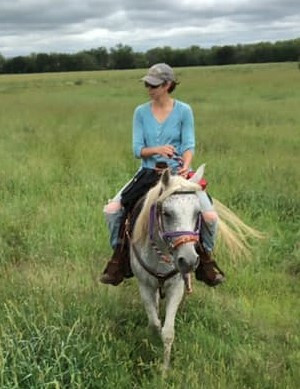
This post may contain affiliate links, which means that I may receive a commission if you make a purchase using these links, with NO additional cost to you.
Training horses is rewarding, but does need to be done with caution. Horses are large animals and need to be handled appropriately. Trained incorrectly and they can be dangerous. Trained correctly and they are remarkable partners. Below I’ll give you some tips to get you going.
First, establish respect on the ground. The basis of all training is respect. Basically, you’re establishing yourself as the dominant horse in the herd. You ask the horse to move, tell them to move, then make them move. Clinton Anderson, founder of Downunder Horsemanship, is very helpful at showing you the subtle cues your horse gives you in communication. You must make sure your horse respects your space. If they enter without permission, back them out.
When training, always start with groundwork and making sure your horse has good manners. This will make a good foundation for whatever discipline your horse will be doing. It is highly recommended, because of a horse’s size, you get professional help and direction. YouTube is a great source for visuals and there are many horse magazines that have helpful practice tips, such as Horse & Rider.
If you are beginner, I do not recommend starting with a colt. I know it seems fun to learn together, but habits that start early are hard to break. Find someone local to help you find a good beginner horse. Beginner horses are pretty set in their ways and can help you learn horsemanship and how to handle a horse.
There are a few basic ground rules to establish no matter what horse you bring home.
#1 No fighting when anyone with 2 legs is in the pen. This is one my mom’s horses had when we were growing up and my herd now has the same rules. Anyone caught ear pinning, biting, or kicking is immediately chased to the far corner and held there until they apologize (lower their head). This is important especially if you have small children. Horses are like magnets to kids, and don’t always understand to look out for horses’ behavior.
#2 Respect my space. No horse is allowed into my space without permission. Stand in a hula hoop and that is about the space you are looking at. This ensures no one is getting run over. With this in mind, as you work with your horse more, you will be able to back them out of your space with your body only. Your eyes and body language have great power when communicating with them.
Horses are truly remarkable animals, and learning to communicate with them opens a world of possibilities. The more time you spend with them, the more easily you will be able to communicate with them.
As I've grown in my journey as an entrepreneur, mom, gardener, and livestock owner, I struggled to find a planner that met my needs and kept me organized. So I MADE MY OWN. You can take a look at it on the link blow and buy it on amazon below
Don't want the whole calendar part? I got you! I pulled the gardening and animal care pages out and put them in a book all their own.
Wanting a community to lean into? Join the FREE Helping Your Family Homestead for Food group! This community is for the Mommas, looking to stay home and raise their kids, but unsure how to keep everyone fed and make ends meet. I share tips from my journey from the office, to half the income and feeding my family from home, while maintaining good nourishing food. Tips include: gardening, bulk buying, caning,/preserving, livestock, homesteading, and home remedies. Your family is precious and this group is to help you gain the knowledge and tools to keep your family well and not reliant on outside professionals. Remedies and tips are easy and simple for the busy momma, time is precious after all, including pregnancy, birth, young kids, and illness. Trust your Momma gut again! This community offers the resources + community you need to help get started on your journey and prepare for whatever future you envision.
Starting to garden doesn't have to be hard! I gathered all the tips I've learned over my gardening learning curve and made them into a simple course to jump start your gardening your life.
Supporting Your Family Naturally From the Inside Out community!! This community is for the Mommas, looking to Support Your Family from Nature for Wellness. Tips range from nutrition, herbals, detoxing, natural cleaning, and essential oils. Basically all the things I’ve learned slowly over the past 5+ years if my journey. We have moved off Facebook, so to better serve our community and be able to discuss openly option for providing for your family in the best way possible.
Join the FREE Community
Join the FREE Community
I've had 3 very different pregnancies. After the first traumatic birth, I learned better and how to care for my body naturally and prevent common pregnancy and birth problems before they arise. This quick course will get you the tools you need to have a naturally healthy pregnancy, labor, and delivery. My first pregnancy I had a normal western medicine all the things pregnancy. My second? I flipped to completely natural, no medicine. Bonus: Preventing Preeclampsia Without the Aspirin & Healing from Birth Trauma
Click here to get the stories straight to your email:
For more on wellness tips click here:
For more on homesteading on your budget click here:
For more simple DIY updates click here:
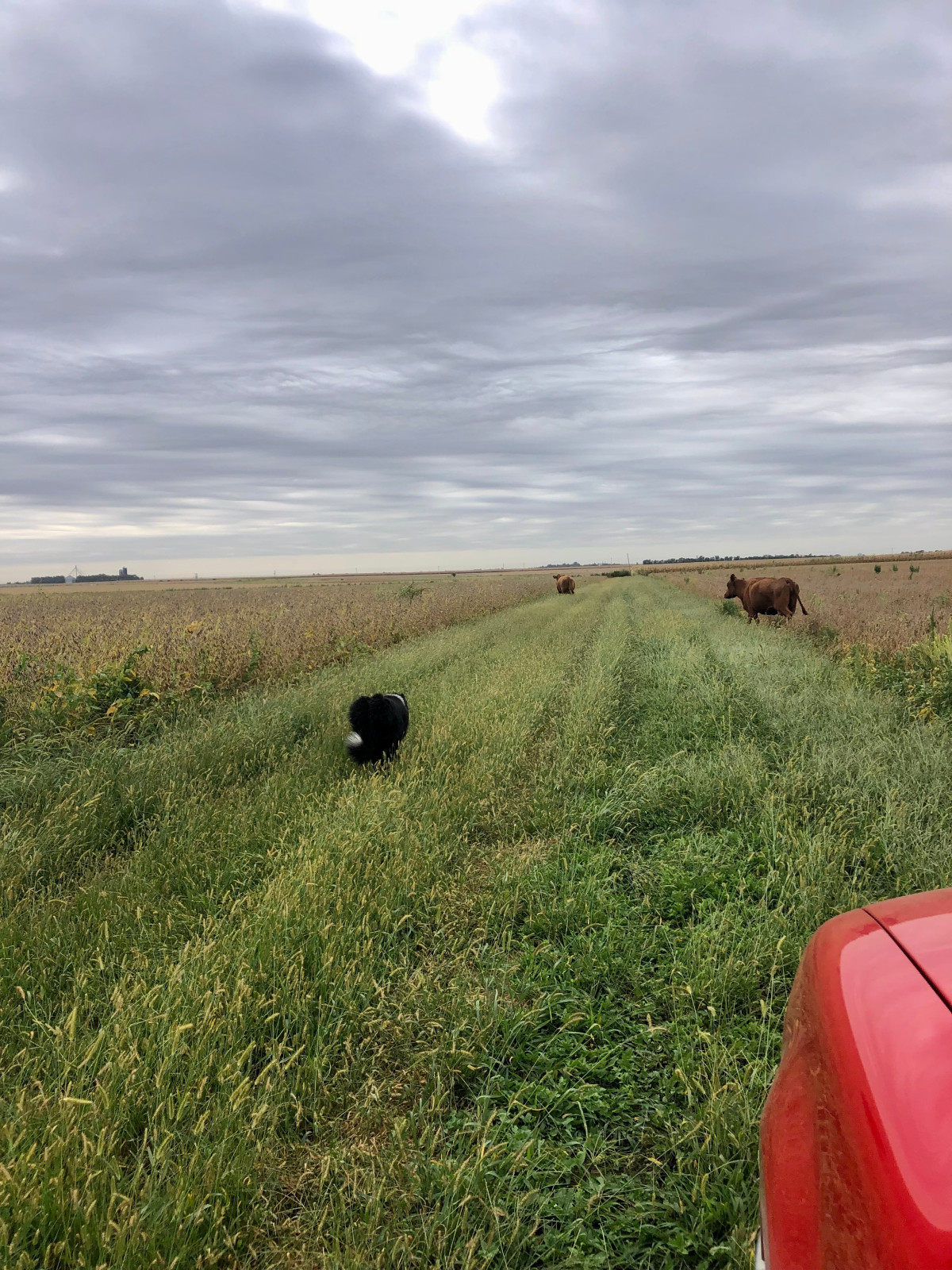
This post may contain affiliate links, which means that I may receive a commission if you make a purchase using these links, with NO additional cost to you.
No matter the dog you have, working or pet, they will need some training. Training is needed for your dog to have manners and not be knocking people, kids, and more over. Below I’ll describe the difference between basic obedience and working and tips for each. Obedience is needed for any job. Working dogs vary from guarding, herding, sporting, and more.
Every dog, no matter if they will be officially working, or simply hanging around, they need basic obedience. Basic obedience is walking on a leash without pulling, sitting, laydown, stay, and leave it. All of these are important for the safety of people and your dog. Walking easily on a leash makes it safe to walk in public and walks pleasant. “Sit”, helps to keep them from jumping on others. “Leave-it” keeps them from pulling on you, or chasing something that could be dangerous, like a car.
Most dogs are eager to please you, if you have established a relationship with them and they respect you. Treats can help establish the understanding of reward, for dogs who need more than just praise. You may have to help them into a sit or down the first time, make sure you praise your dog right after they do as you wish.
For working dogs, they will need a bit more training. Depending on what job your dog will be doing, what training they will need. For guard dogs, you will be able to train them. The biggest thing to teach them in addition to obedience, is to teach them their boundaries. In the beginning you will need to stake or pen them close to what they are to be guarding. Then you can begin to take them on perimeter walks. Depending on the size of the territory, you may need a fence collar to keep them in.
If you are looking at a herding dog, you may need some outside help to get started. Most good herding dogs have an innate ability to know what to do. But you will need to learn how to communicate with them and how to slow them down if needed. Basic communication between the dog and you should be directions (left and right), down, come, stay, and heel (walk with me).
Dogs are eager to please and easy to train. They are good at their jobs no matter what it is. Dogs make an excellent extra set of hands for work, or even companions. Basic obedience is the foundation of all training.
As I've grown in my journey as an entrepreneur, mom, gardener, and livestock owner, I struggled to find a planner that met my needs and kept me organized. So I MADE MY OWN. You can take a look at it on the link blow and buy it on amazon below
Don't want the whole calendar part? I got you! I pulled the gardening and animal care pages out and put them in a book all their own.
Wanting a community to lean into? Join the FREE Helping Your Family Homestead for Food group! This community is for the Mommas, looking to stay home and raise their kids, but unsure how to keep everyone fed and make ends meet. I share tips from my journey from the office, to half the income and feeding my family from home, while maintaining good nourishing food. Tips include: gardening, bulk buying, caning,/preserving, livestock, homesteading, and home remedies. Your family is precious and this group is to help you gain the knowledge and tools to keep your family well and not reliant on outside professionals. Remedies and tips are easy and simple for the busy momma, time is precious after all, including pregnancy, birth, young kids, and illness. Trust your Momma gut again! This community offers the resources + community you need to help get started on your journey and prepare for whatever future you envision.
Starting to garden doesn't have to be hard! I gathered all the tips I've learned over my gardening learning curve and made them into a simple course to jump start your gardening your life.
Supporting Your Family Naturally From the Inside Out community!! This community is for the Mommas, looking to Support Your Family from Nature for Wellness. Tips range from nutrition, herbals, detoxing, natural cleaning, and essential oils. Basically all the things I’ve learned slowly over the past 5+ years if my journey. We have moved off Facebook, so to better serve our community and be able to discuss openly option for providing for your family in the best way possible.
Join the FREE Community
Join the FREE Community
I've had 3 very different pregnancies. After the first traumatic birth, I learned better and how to care for my body naturally and prevent common pregnancy and birth problems before they arise. This quick course will get you the tools you need to have a naturally healthy pregnancy, labor, and delivery. My first pregnancy I had a normal western medicine all the things pregnancy. My second? I flipped to completely natural, no medicine. Bonus: Preventing Preeclampsia Without the Aspirin & Healing from Birth Trauma
Click here to get the stories straight to your email:
For more on wellness tips click here:
For more on homesteading on your budget click here:
For more simple DIY updates click here:
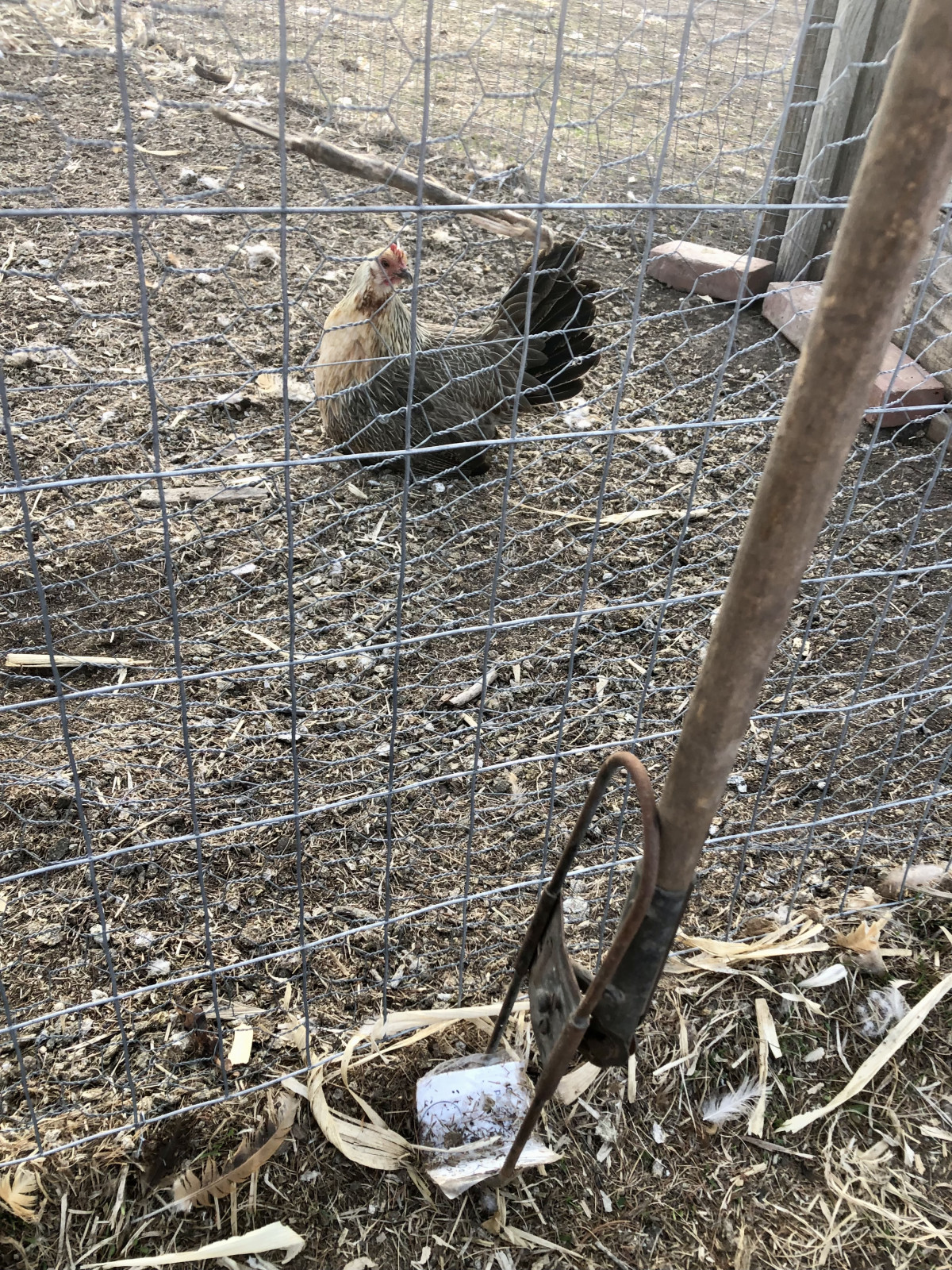
This post may contain affiliate links, which means that I may receive a commission if you make a purchase using these links, with NO additional cost to you.
The basics of a pen is to contain animals to a specific area for management or safety. This can give you a lot of freedom to design with resources you have to meet your and your animals’ needs. There are a few design differences to keep in mind for birds, or dogs.
First up the birds (chickens, turkey, guinea, ducks, geese, etc). If you are keeping birds locked in a run, you will need a predator proof fence. Chicken wire isn’t going to cut it. It is not strong enough to hold up the long term. Save yourself time and money and invest in welded wire. Bury 4-6 inches into the ground to keep predators from trying to dig in. You will need a fence at least 8 foot tall as well. If hawks are a problem, you’ll need some kind of overhead protection. That could be a physical fence top, or string wires across the top.
If you free range your flock, I highly recommend having a shed or night base for the birds to gather in that is protected. I lock my birds in at night, but I know people who don’t. The main thing is you will have to protect your flock somehow. I use a combination of geese and guardian dog. Our house has fields around it that in the summer, create a natural fence the birds don’t like to go into. The LGD knows his border and keeps the land predators pushed out, keeping the birds safe. The geese keep an eye on the sky and alert the LGD if there is an issue. It really is fun to watch them work together.
Mobil chicken tractors are also an option, but you have to have an open landscape for them work. In my home, I have too many trees for that to be a feasible option.
Now the farm dogs. This is probably the easiest. Once a farm dog knows his home base and his boundary, you really don’t need to keep them in a physical fence. When introducing a new dog or puppy to the farm, have a kennel or tie line to help them learn this is home. Then gradually let them out with supervised time, walks around the property. As they show themselves trustworthy, you can leave them free all the time. Keep the tie out handy for the times they do go too far, and you can tie them back up. For a time.
What about if you have a dog that just won’t stay home, or will not leave flocks/animals alone? In this case you will need some kind of fence or collar. Full disclosure. I have 2 cattle working dogs that will herd and terrorize the chickens non-stop. I have a pet safe wireless fence that keeps them in the front yard. The birds stay outside their fence, and everyone lives in peace (most of the time).
For a dog prone to wandering, I’d recommend a gps hunting collar. I had one for our LGD to keep him on the property, because we have such a small land base (3.4 acres). However, I must be within .5 miles to keep connection with his collar. The good news he’s most prone to wondering at night, so I keep the remote by my bed. I am looking at upgrading to a collar that connects to my phone. Currently, he is running without a collar and if he leaves, he is tied back up for a time.
Fence for bird flocks and farm dogs, doesn’t need to be complicated. It is important to keep everyone as safe as possible. A few tools and thinking through your landscape and you’ll have the best adaptable solution for you.
As I've grown in my journey as an entrepreneur, mom, gardener, and livestock owner, I struggled to find a planner that met my needs and kept me organized. So I MADE MY OWN. You can take a look at it on the link blow and buy it on amazon below
Don't want the whole calendar part? I got you! I pulled the gardening and animal care pages out and put them in a book all their own.
Wanting a community to lean into? Join the FREE Helping Your Family Homestead for Food group! This community is for the Mommas, looking to stay home and raise their kids, but unsure how to keep everyone fed and make ends meet. I share tips from my journey from the office, to half the income and feeding my family from home, while maintaining good nourishing food. Tips include: gardening, bulk buying, caning,/preserving, livestock, homesteading, and home remedies. Your family is precious and this group is to help you gain the knowledge and tools to keep your family well and not reliant on outside professionals. Remedies and tips are easy and simple for the busy momma, time is precious after all, including pregnancy, birth, young kids, and illness. Trust your Momma gut again! This community offers the resources + community you need to help get started on your journey and prepare for whatever future you envision.
Starting to garden doesn't have to be hard! I gathered all the tips I've learned over my gardening learning curve and made them into a simple course to jump start your gardening your life.
Supporting Your Family Naturally From the Inside Out community!! This community is for the Mommas, looking to Support Your Family from Nature for Wellness. Tips range from nutrition, herbals, detoxing, natural cleaning, and essential oils. Basically all the things I’ve learned slowly over the past 5+ years if my journey. We have moved off Facebook, so to better serve our community and be able to discuss openly option for providing for your family in the best way possible.
Join the FREE Community
Join the FREE Community
I've had 3 very different pregnancies. After the first traumatic birth, I learned better and how to care for my body naturally and prevent common pregnancy and birth problems before they arise. This quick course will get you the tools you need to have a naturally healthy pregnancy, labor, and delivery. My first pregnancy I had a normal western medicine all the things pregnancy. My second? I flipped to completely natural, no medicine. Bonus: Preventing Preeclampsia Without the Aspirin & Healing from Birth Trauma
Click here to get the stories straight to your email:
For more on wellness tips click here:
For more on homesteading on your budget click here:
For more simple DIY updates click here:
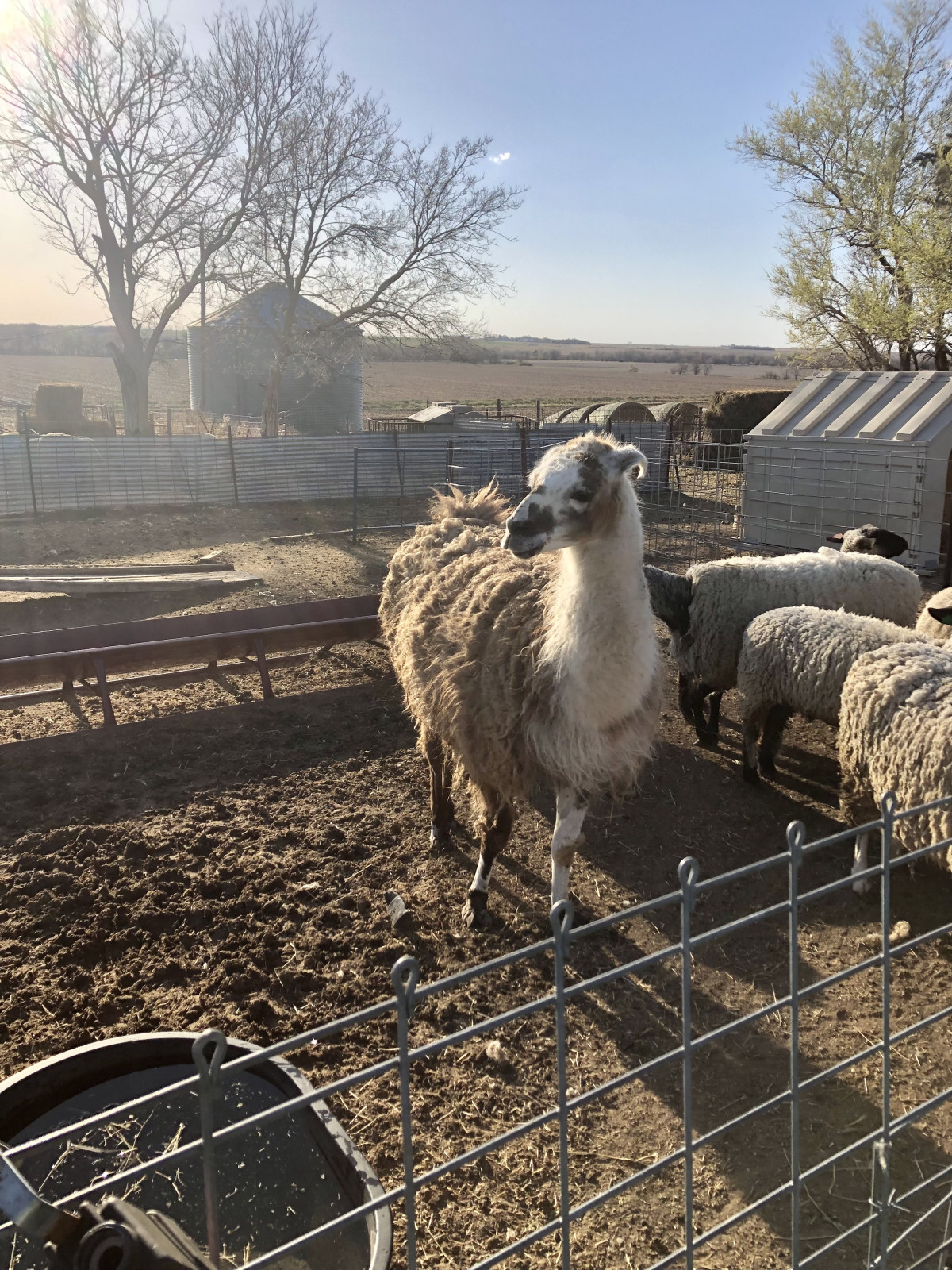
This post may contain affiliate links, which means that I may receive a commission if you make a purchase using these links, with NO additional cost to you.
The basics of a pen is to contain animals to a specific area for management or safety. This can give you a lot of freedom to design with resources you have to meet your and your animals’ needs. There are a few design differences to keep in mind for horses, cattle, and sheep/goats.
If you have access to a power source (solar, battery, plug in), electric fence can be an option for most livestock. Horses and cows will respect a single strand hot wire, calves will need a second or third. Sheep will need 4 wires, with 2 hot. Electric fence also gives you the flexibility of easily moving or rotating pastures. Keep in mind, if the fence goes dead, animals have an amazing ability to know when it’s no longer on and will let themselves out. Electric fence is a great option for open grazing space. It does not work well for close corridors/high pressure areas.
For sheep, cattle panels work well. I have tried woven wire before, and it just doesn’t hold up to ewes trying to climb the fence and heads get caught too easily in the squares. Hog panels may work for sort breeds, but most of the time they are too short, and the sheep will jump out. Keep in mind for sheep you need some kind of predator deterrent or protection. The cattle panels are tall enough to deter many predators looking for an easy meal, but a determined one will search for openings. That is where a livestock guardian animal (dog, donkey, llama, etc.) comes in.
For horses in a confined area, cattle panels will work for the short term, but they will start to reach over and bend the panels if there isn’t something sturdier. You can put an electric wire across the top to keep them from leaning on the fence. Across the front of my fence, I have 4 rails of 2x6 boards. This is a very sturdy fence, but it has the hay and feed on the other side, so a sturdy fence is needed there. The other 3 sides are 4 strand smooth wire, with 2 hot. This gives me the ability for bottle calves to run there if needed.
Cattle in high pressure areas need something even sturdier. If you are only running a few head, you could get by with a simple cattle panel pen. If you are raising and moving many cattle through a chute system, you will need strong fencing, pipe is the most common as it can handle the pressure of large herds pushing on it while moving along.
Your fencing needs will depend on how much pressure your fence is under. The more pressure, the sturdier your fence will need to be. Increase pressure comes from an increase in the number of animals or a decrease in total space or a combination. Keep in mind the goal and function of your fence (open grazing or protecting from extra feed). Then take your needs, space available, with the my tips and start designing!
As I've grown in my journey as an entrepreneur, mom, gardener, and livestock owner, I struggled to find a planner that met my needs and kept me organized. So I MADE MY OWN. You can take a look at it on the link blow and buy it on amazon below
Don't want the whole calendar part? I got you! I pulled the gardening and animal care pages out and put them in a book all their own.
Wanting a community to lean into? Join the FREE Helping Your Family Homestead for Food group! This community is for the Mommas, looking to stay home and raise their kids, but unsure how to keep everyone fed and make ends meet. I share tips from my journey from the office, to half the income and feeding my family from home, while maintaining good nourishing food. Tips include: gardening, bulk buying, caning,/preserving, livestock, homesteading, and home remedies. Your family is precious and this group is to help you gain the knowledge and tools to keep your family well and not reliant on outside professionals. Remedies and tips are easy and simple for the busy momma, time is precious after all, including pregnancy, birth, young kids, and illness. Trust your Momma gut again! This community offers the resources + community you need to help get started on your journey and prepare for whatever future you envision.
Starting to garden doesn't have to be hard! I gathered all the tips I've learned over my gardening learning curve and made them into a simple course to jump start your gardening your life.
Supporting Your Family Naturally From the Inside Out community!! This community is for the Mommas, looking to Support Your Family from Nature for Wellness. Tips range from nutrition, herbals, detoxing, natural cleaning, and essential oils. Basically all the things I’ve learned slowly over the past 5+ years if my journey. We have moved off Facebook, so to better serve our community and be able to discuss openly option for providing for your family in the best way possible.
Join the FREE Community
Join the FREE Community
I've had 3 very different pregnancies. After the first traumatic birth, I learned better and how to care for my body naturally and prevent common pregnancy and birth problems before they arise. This quick course will get you the tools you need to have a naturally healthy pregnancy, labor, and delivery. My first pregnancy I had a normal western medicine all the things pregnancy. My second? I flipped to completely natural, no medicine. Bonus: Preventing Preeclampsia Without the Aspirin & Healing from Birth Trauma
Click here to get the stories straight to your email:
For more on wellness tips click here:
For more on homesteading on your budget click here:
For more simple DIY updates click here:
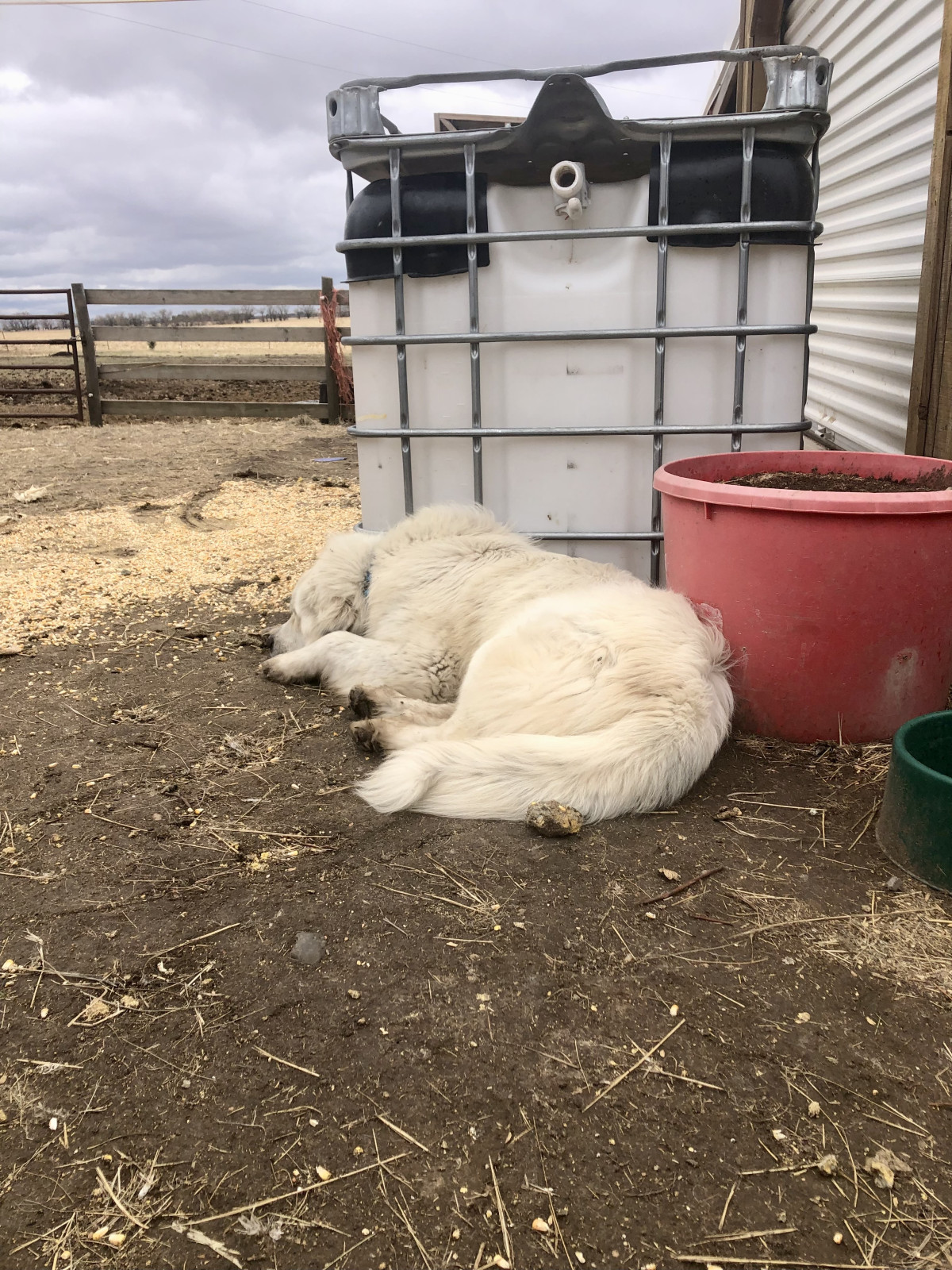
Support animals are animals that don’t directly feed you or your family but help you to care for the animals that do or help you to care for those animals. The goal of any homestead or farmstead is to have all the animals integrated into a system that works together to support each other. For example, the horses don’t feed my family directly, but they produce the fertilizer for the garden and help move the cows around, which do feed my family. So how do you feed them all? Let's take a look!
Bees
These could be debated as a support animal because they do feed my family with the honey they produce. However, they mostly feed themselves and help with pollination in my garden and orchard. The biggest thing with bees is making sure they have water, ideally close, bees will fly 2 miles for resources. However, I want them drinking from my water, not the pivots around us. I usually just leave a board in the closest pool/water tank, and they quickly learn to get water from there. Really this water is then watering multiple livestock.
As far as feeding the bees, going into winter you want to make sure they have 2 deep boxes full of honey, in Nebraska. I then put an emergency feed of sugar, sprayed with water to crust it over, on top of the last box. This is because I may not be able to get into the hive and check the bees for 2 months because it is so cold.
Horses
Horses need forage, ideally 20 hours a day. Grass pasture is ideal, but not always accessible. Most horses will do fine with good grass hay, just be aware of mold in the bales. Older horses will need more special feed (you can read more on that in my blog Caring for Your Senior Horse). If more protein is needed, alfalfa can also be fed. Also have a salt block available (iodized if you are in an iodine deficient zone).
Many people feed their horse grain. There are so many options there and will depend on the age and workload of your horse. My horses’ work is light and are easy keepers. They get prairie hay and some oats to deliver their vitamin/mineral supplement. Whole oats are usually an easy and safe option for most horses.
Dogs
Dogs need some kind of food, unless you want them feeding themselves with the chickens. A good farm dog may run free on the property and not need a lot of actual dog food, if they are catching rabbits. However, it is good to have it available for them. Growing up my dogs were free fed from a communal bow. The bowl of food was filled once a day and they at as they felt and shared. Now? I have 4 very different dogs, with very different needs (blue heeler to great Pyrenees). I cannot leave a bowl of food out all day, as the blue heeler would eat herself to death. I do still feed them all together, but in their separate bowls.
The easiest way to feed them is to get them some dog food from your local farm/feed store. You will need to pay attention to the protein amount, as many feeds do not have enough protein for working active dogs. You can feed dogs the scraps of food from the kitchen, and if you have a milk cow or make your own cheese, they love the whey. Our dogs also get other animal organs once a week to stretch the dog food.
I do strongly recommend communal feeding, especially if you have more than one working dog. Dogs that eat together as a pack, work together as a pack. You can retrain them even if they haven’t been eating together. Start with their own bowls and slowly move the bowls closer together. If anyone growls, they lose their food and are sent away from the food circle. There will be days a dog will go hungry, but they very quickly learn to eat together. My dogs now eat all with bowls touching, and the fighting has greatly decreased.
Cats
News flash, barn cats can survive on dog food. I know, send me the hate mail now, but here me out. The main difference between cat and dog food is most dog foods don’t have taurine, and definitely not enough to meet a cat’s needs. Dog food also tends to be lower in arachidonic acid, niacin, and vitamin A than cats need. Here’s the thing, if your barn cats are doing their job, hunting mice and small rodents), they are going to get those nutrients.
The key with barn cats is to feed them some, enough to keep them around, but not enough that they don’t want to go hunting for the mice around the barns. Also only feed them in the morning or early afternoon, so the food is cleaned up before evening when the opossums come out.
Feeding your support partners doesn't have to be complicated. There are a few things to keep in mind though to make sure everyone stays healthy.
As I've grown in my journey as an entrepreneur, mom, gardener, and livestock owner, I struggled to find a planner that met my needs and kept me organized. So, I MADE MY OWN. You can take a look at it on the link blow and buy it on amazon below:
Don't want the whole calendar part? I got you! I pulled the gardening and animal care pages out and put them in a book all their own.
Wanting a community to lean into? Join the FREE Helping Your Family Homestead for Food group! This community is for the Mommas, looking to stay home and raise their kids, but unsure how to keep everyone fed and make ends meet. I share tips from my journey from the office, to half the income and feeding my family from home, while maintaining good nourishing food. Tips include: gardening, bulk buying, caning,/preserving, livestock, homesteading, and home remedies. Your family is precious and this group is to help you gain the knowledge and tools to keep your family well and not reliant on outside professionals. Remedies and tips are easy and simple for the busy momma, time is precious after all, including pregnancy, birth, young kids, and illness. Trust your Momma gut again! This community offers the resources + community you need to help get started on your journey and prepare for whatever future you envision.
Starting to garden doesn't have to be hard! I gathered all the tips I've learned over my gardening learning curve and made them into a simple course to jump start your gardening your life.
Supporting Your Family Naturally From the Inside Out community!! This community is for the Mommas, looking to Support Your Family from Nature for Wellness. Tips range from nutrition, herbals, detoxing, natural cleaning, and essential oils. Basically all the things I’ve learned slowly over the past 5+ years if my journey. We have moved off Facebook, so to better serve our community and be able to discuss openly option for providing for your family in the best way possible.
Join the FREE Community
Join the FREE Community
I've had 3 very different pregnancies. After the first traumatic birth, I learned better and how to care for my body naturally and prevent common pregnancy and birth problems before they arise. This quick course will get you the tools you need to have a naturally healthy pregnancy, labor, and delivery. My first pregnancy I had a normal western medicine all the things pregnancy. My second? I flipped to completely natural, no medicine. Bonus: Preventing Preeclampsia Without the Aspirin & Healing from Birth Trauma
Click here to get the stories straight to your email:
For more on wellness tips click here:
For more on homesteading on your budget click here:
For more simple DIY updates click here:
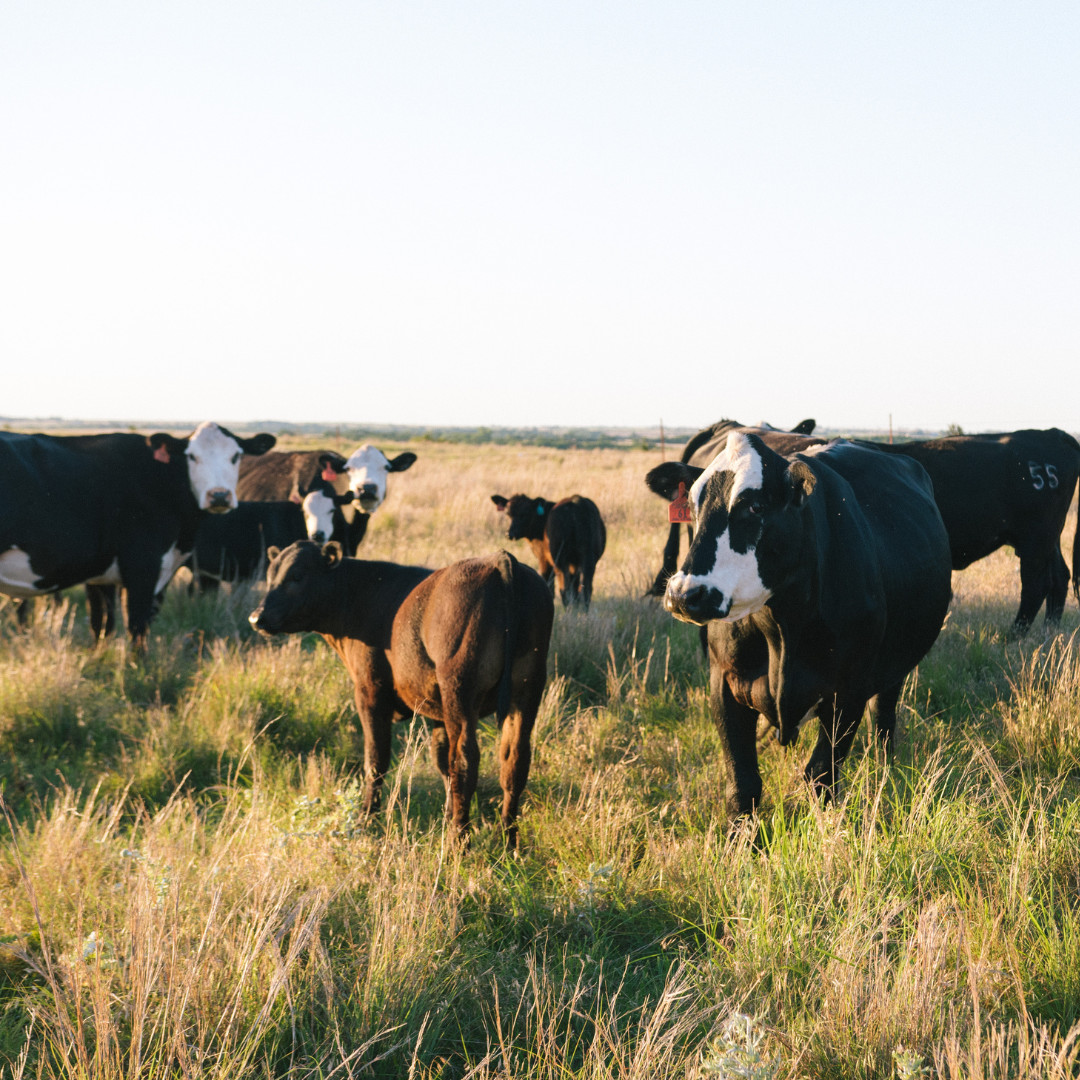
This post may contain affiliate links, which means that I may receive a commission if you make a purchase using these links, with NO additional cost to you.
I’m going to be specific on this blog to beef cows and feeding for fattening. There is a difference in feeding beef/fattening cattle and dairy cows. This is another topic I’m going to try to not get into to much science details. I’ve had a lot of school and life experience feeding cattle.
If you are a beginner homesteader raising beef cows, it's essential to know how to feed them correctly. Unlike dairy cows, feeding beef cows is less complicated, but it still requires a bit of science, especially when you don't have access to year-round pasture grass. Feeding cows lacks year-round grazing is possible, provided you adhere to some essential nutritional requirements. The secret lies in providing the necessary macro and micro-nutrients to your cows, including proper protein supplements, minerals, and vitamins. Many micro-nutrients can be made by bacteria in the rumen of the cow. In this post, we will focus on the basics of feeding in the lack of year-round pasture access, aimed specifically at beginner homesteaders.
1. Start with Forage
Forage is the foundation of a cow's diet, even when you don't have access to pasture. Dry hay, silage, and other types of roughage are great sources of forage to replace pasture grass. It is imperative to ensure that the forage you choose contains the essential minerals and protein requirements. Generally, good quality forage will contain more than 50% proportion of total intake. Ensure that you provide adequate amounts of forage for your cows, depending on their weight and body condition score.
2. Add Supplements to meet Deficiencies
Cows require specific supplements, such as protein and minerals, to meet their nutritional needs. During the winter season, beef cows may need more energy and protein, especially for pregnant or lactating cows. You can supplement your cows' diet with alfalfa, soybean meal or cottonseed meal, but you need to ensure that you do not exceed the recommended dosage. Make sure that the supplements you choose provide the correct amounts of nutrients to meet your cows' protein and energy requirements. Cattle being fed for beef/fattening will require more energy and protein, than a cow in reproduction stage of her life.
3. Offer Salt and Mineral Lick Blocks
Minerals and vitamins are micronutrients that are essential for the growth and development of beef cows. They are needed in small amounts but are crucial for proper bodily functions. There are two types of minerals – macrominerals and microminerals. Macrominerals such as Potassium, Calcium, and Magnesium are needed in larger quantities, while microminerals such as Zinc, Copper, and Manganese are only needed in small quantities. These nutrients can be provided in the form of salt mineral supplements, which should be available to cows at all times.
4. Provide Water
Water is essential for cows as their bodies require it for various functions, such as digestion, metabolism and temperature control. During the winter season, cows may drink less water, but you need to ensure that they have access to clean water regularly. Generally, cows consume around 1-3 gallons of water for every 100 pounds of their weight.
5. Optimize Feeding Practices
To efficiently feed your beef cows without year-round pasture access, it's essential to optimize your feeding practices. You can feed your cows using a total mixed ration (TMR), in which all the ingredients are combined to meet their nutritional requirements. Additionally, you can feed your cows using a ration balancer that contains a combination of essential vitamins and minerals to supplement their diet.
Feeding beef cows isn’t rocket science, but it’s not quite as simple as feeding them some hay and grains. The key to ensuring the health and productivity of beef cows is providing a balanced diet that meets their nutritional needs, including proteins, minerals, and vitamins. Additionally, feeding them should be adjusted depending on the season and the needs of the cow's life stage. While grazing year-round is the easiest option, when that is not possible, supplements like soybean meal and mineral supplements can help meet their dietary needs. Understanding these basics can make a significant difference in your beef cow farming, and even beginner homesteaders can provide their cows with proper nutrition by using the tips outlined in this post. If you are wanting more information on specifics, join my free group for beginner homesteaders linked below. I go into way more detail there.
As I've grown in my journey as an entrepreneur, mom, gardener, and livestock owner, I struggled to find a planner that met my needs and kept me organized. So, I MADE MY OWN. You can take a look at it on the link blow and buy it on amazon below:
Don't want the whole calendar part? I got you! I pulled the gardening and animal care pages out and put them in a book all their own.
Wanting a community to lean into? Join the FREE Helping Your Family Homestead for Food group! This community is for the Mommas, looking to stay home and raise their kids, but unsure how to keep everyone fed and make ends meet. I share tips from my journey from the office, to half the income and feeding my family from home, while maintaining good nourishing food. Tips include: gardening, bulk buying, caning,/preserving, livestock, homesteading, and home remedies. Your family is precious and this group is to help you gain the knowledge and tools to keep your family well and not reliant on outside professionals. Remedies and tips are easy and simple for the busy momma, time is precious after all, including pregnancy, birth, young kids, and illness. Trust your Momma gut again! This community offers the resources + community you need to help get started on your journey and prepare for whatever future you envision.
Starting to garden doesn't have to be hard! I gathered all the tips I've learned over my gardening learning curve and made them into a simple course to jump start your gardening your life.
Supporting Your Family Naturally From the Inside Out community!! This community is for the Mommas, looking to Support Your Family from Nature for Wellness. Tips range from nutrition, herbals, detoxing, natural cleaning, and essential oils. Basically all the things I’ve learned slowly over the past 5+ years if my journey. We have moved off Facebook, so to better serve our community and be able to discuss openly option for providing for your family in the best way possible.
Join the FREE Community
Join the FREE Community
I've had 3 very different pregnancies. After the first traumatic birth, I learned better and how to care for my body naturally and prevent common pregnancy and birth problems before they arise. This quick course will get you the tools you need to have a naturally healthy pregnancy, labor, and delivery. My first pregnancy I had a normal western medicine all the things pregnancy. My second? I flipped to completely natural, no medicine. Bonus: Preventing Preeclampsia Without the Aspirin & Healing from Birth Trauma
Click here to get the stories straight to your email:
For more on wellness tips click here:
For more on homesteading on your budget click here:
For more simple DIY updates click here:
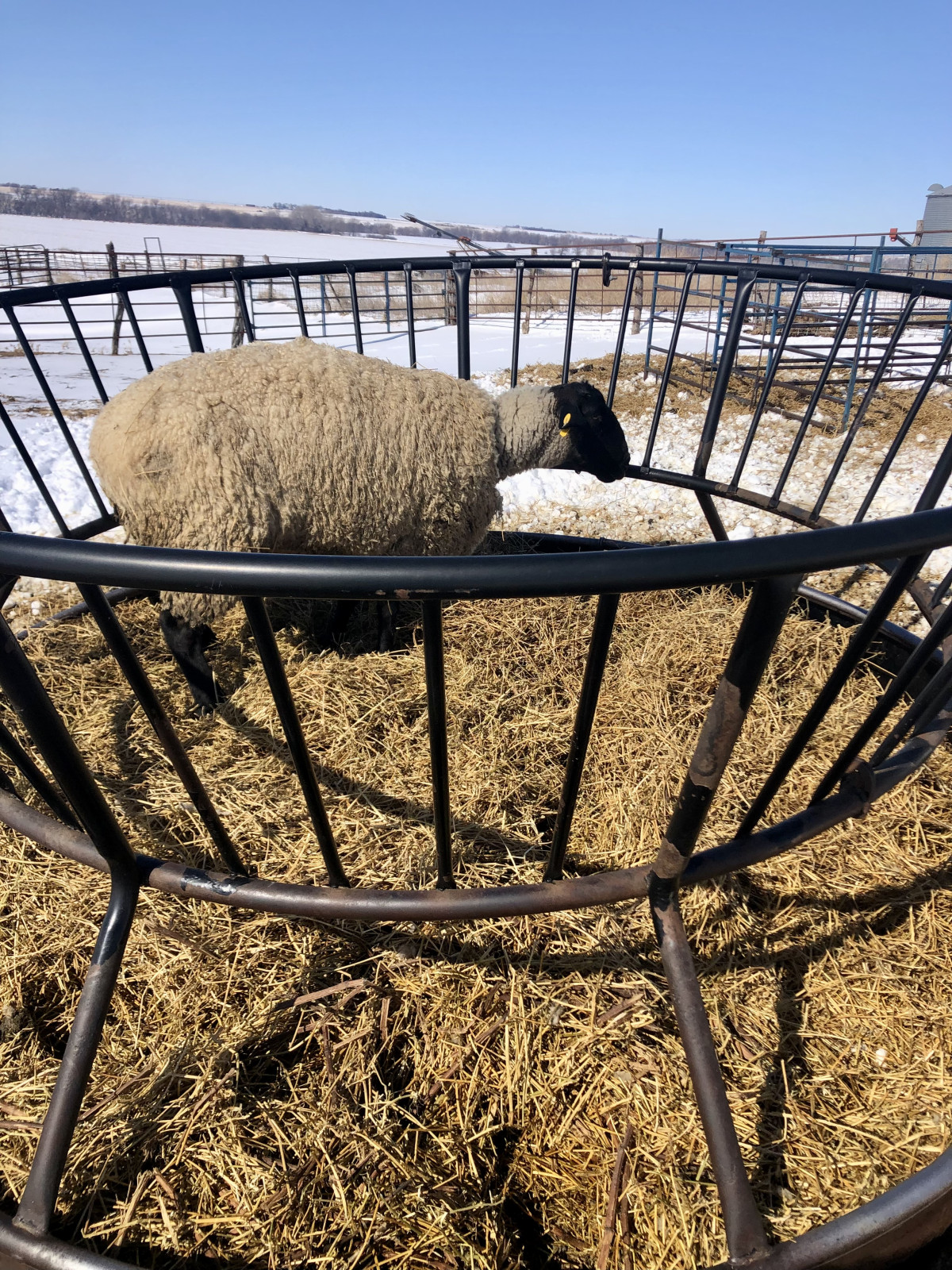
This post may contain affiliate links, which means that I may receive a commission if you make a purchase using these links, with NO additional cost to you.
Feeding sheep isn’t really complicated. There are a few key things to keep in mind though. Buckle up were going to fly through 20 years of sheep feeding experience in 492 words. If you want more details, join my free group linked below. Let’s go!
First if you’re grazing sheep, keep in mind they prefer broad leaf weeds over grass. Perfect for chemical free pasture weeding. You will however need to have some kind of predator proofing. Sheep are favorite meals for several large predators, like coyotes. We’ll talk more on fencing in a later blog. Another good option is to run some kind of livestock guarding, either a dog, donkey, llama, or combination are the most popular for sheep. Dividing the pasture into small areas or paddocks and then moving them every 2-3 days, best utilize the pasture.
Forage is key for sheep as they are ruminants. Keep in mind when feeding any ruminant, or really any animal (human included), you are actually feeding the bacteria in the gut first. The bacteria then produce much of the nutrients, in the form of volatile fatty acids, in the rumen. The partly digested food, then passes through the rest of the digestive tract, where it is broken down into absorbable compounds.
If you do not have safe pasture for sheep, not all is lost. You can keep sheep in a dry lot. You will need to have forage, usually grass or alfalfa hay. They will need supplements for vitamins and minerals, as those may be lacking in dried hay. One thing with minerals for sheep is you must feed sheep only mineral. Sheep are very easily to give too much copper and become toxic.
Just prior to breeding season it is helpful to give the ewes some grain, such as corn. The nutrient boost helps to prepare them for breeding and ovulate more eggs, giving a greater percentage of twins. You could do this with pasture as well, by giving them access to new growth pasture, which tends to be higher in nutrients.
Sheep are also expert sorters. If you are unsure of what they are eating, watch them for a little bit and you will quickly see what they sort out. Be careful to give adequate nutrition during pregnancy, but not excessive. To many nutrients you will have very big lambs and need to pull or assist in birth. To few nutrients, you will have weak lambs. Sorting ewes by how many lambs they are carrying can be helpful, but not necessary.
After lambing, ewes will need supplementing if you are lambing in the winter months. Ewes have high nutrient requirements as they are lactating. As weaning approaches, you can decrease the grain to help the ewes naturally dry up. In a dry lot setting, make sure you have a creep area for the lambs to have access to grain formulated for their growing bodies. They will eat hay with their mom (alfalfa is best during lactation).
Remember, sheep need forage first. Pasture is ideal, but you can match hay with seasons and ewe cycle, supplementing with grain as needed. Always have access to clean water, that the smallest lamb in the pen can reach, as well.
As I've grown in my journey as an entrepreneur, mom, gardener, and livestock owner, I struggled to find a planner that met my needs and kept me organized. So, I MADE MY OWN. You can take a look at it on the link blow and buy it on amazon below:
Don't want the whole calendar part? I got you! I pulled the gardening and animal care pages out and put them in a book all their own.
Wanting a community to lean into? Join the FREE Helping Your Family Homestead for Food group! This community is for the Mommas, looking to stay home and raise their kids, but unsure how to keep everyone fed and make ends meet. I share tips from my journey from the office, to half the income and feeding my family from home, while maintaining good nourishing food. Tips include: gardening, bulk buying, caning,/preserving, livestock, homesteading, and home remedies. Your family is precious and this group is to help you gain the knowledge and tools to keep your family well and not reliant on outside professionals. Remedies and tips are easy and simple for the busy momma, time is precious after all, including pregnancy, birth, young kids, and illness. Trust your Momma gut again! This community offers the resources + community you need to help get started on your journey and prepare for whatever future you envision.
Starting to garden doesn't have to be hard! I gathered all the tips I've learned over my gardening learning curve and made them into a simple course to jump start your gardening your life.
Supporting Your Family Naturally From the Inside Out community!! This community is for the Mommas, looking to Support Your Family from Nature for Wellness. Tips range from nutrition, herbals, detoxing, natural cleaning, and essential oils. Basically all the things I’ve learned slowly over the past 5+ years if my journey. We have moved off Facebook, so to better serve our community and be able to discuss openly option for providing for your family in the best way possible.
Join the FREE Community
Join the FREE Community
I've had 3 very different pregnancies. After the first traumatic birth, I learned better and how to care for my body naturally and prevent common pregnancy and birth problems before they arise. This quick course will get you the tools you need to have a naturally healthy pregnancy, labor, and delivery. My first pregnancy I had a normal western medicine all the things pregnancy. My second? I flipped to completely natural, no medicine. Bonus: Preventing Preeclampsia Without the Aspirin & Healing from Birth Trauma
Click here to get the stories straight to your email:
For more on wellness tips click here:
For more on homesteading on your budget click here:
For more simple DIY updates click here:
This post may contain affiliate links, which means that I may receive a commission if you make a purchase using these links, with NO additional cost to you.
If you're thinking of starting a small homestead, keeping chickens is a great way to start. Chickens are fairly low-maintenance and forgiving when it comes to feeding. As long as you provide them with some supplemental feed and kitchen scraps along with their free-range activities, they'll thrive. There are a few things to keep in mind, though. Whether you're looking to buy formulated feed from a farm store or make your own feed mix, this beginner's guide will give you all the tips you need to keep your chickens fed and healthy. If you can’t free range, no worries! You can still have chickens.
Formulated Feed:
The easiest way to keep your chickens fed is to buy formulated feed from a farm store. It contains all the necessary nutrients that your chickens need to thrive. You can choose between different formulations based on the age of your chickens, their breed, or if they're laying hens or meat birds. You can also choose between pellets, crumbles, or mash, depending on your chickens' preference. This is by far the easiest for free-ranging and those not. It is also more expensive. Keeping a self-feeder of oyster shells or crushed egg shells for laying hens, is a must to keep hens laying appropriately.
Kitchen Scraps:
Chickens love kitchen scraps, but there are a few things to keep in mind. Firstly, make sure that scraps are fresh and not moldy or spoiled. Secondly, avoid giving them scraps that are too salty, spicy, or greasy. Lastly, avoid giving them scraps that contain avocados, chocolate, onions, or citrus, as they can be toxic for chickens. Kitchen scraps that are great for chickens include fruits, vegetables, grains, and bread. I like to scatter these on the ground around the coop or in the run for extra entertainment for them.
Supplemental Feed:
If you can free-range your chickens in your backyard, you don't need to feed them a lot of formulated feed. However, it's always a good idea to have some supplemental feed on hand. You can buy scratch grains, which are a mixture of grains like corn, wheat, and barley, and scatter them in your backyard for your chickens to find. You can should add some oyster shell or grit to their feed to help with digestion. Free ranging is also excellent for bug control. They will meet most of their protein requirements from bugs. In the winter you will need to supplement more to meet their nutritional requirements.
Home Feed Mix:
If you're looking to save money and make your own feed mix, it's important to keep in mind the essential nutrients that your chickens need, such as protein, carbohydrates, vitamins, and minerals. You can make a mix of whole grains, like wheat, corn, oats, and barley, and add some soybean meal, distillers, or fish meal for protein. There are several different ways to raise your own protein by growing bugs for your chickens. You can also add some greens, like alfalfa, for vitamins and minerals. However, before making your own feed mix, it's important to research and consult with an expert to ensure that your chickens are getting all the essential nutrients they need. (I’ll be dropping what I’ve learned in my free Beginner Homesteading group linked below).
Water:
Finally, it's important to make sure that your chickens always have access to fresh water. Water helps with digestion and keeps your chickens hydrated. You can use a water dispenser or a chicken waterer to make sure that your chickens have access to water at all times. Make sure to change the water regularly to avoid contamination and bacteria growth. You will also need to clean and scrub out the waters about once a week in the summer to keep algae growth away.
Keeping chickens fed is fairly easy, as long as you provide them with the necessary nutrients they need to thrive. When you don’t they won’t give you eggs. Whether you choose to buy formulated feed, feed them kitchen scraps, or make your own feed mix, always keep in mind the essential nutrients that your chickens need. Also, make sure to provide them with fresh water at all times. By following these tips, your chickens will be happy and healthy, and your homestead will be off to a great start.
As I've grown in my journey as an entrepreneur, mom, gardener, and livestock owner, I struggled to find a planner that met my needs and kept me organized. So I MADE MY OWN. You can take a look at it on the link blow and buy it on amazon below
Don't want the whole calendar part? I got you! I pulled the gardening and animal care pages out and put them in a book all their own.
Wanting a community to lean into? Join the FREE Helping Your Family Homestead for Food group! This community is for the Mommas, looking to stay home and raise their kids, but unsure how to keep everyone fed and make ends meet. I share tips from my journey from the office, to half the income and feeding my family from home, while maintaining good nourishing food. Tips include: gardening, bulk buying, caning,/preserving, livestock, homesteading, and home remedies. Your family is precious and this group is to help you gain the knowledge and tools to keep your family well and not reliant on outside professionals. Remedies and tips are easy and simple for the busy momma, time is precious after all, including pregnancy, birth, young kids, and illness. Trust your Momma gut again! This community offers the resources + community you need to help get started on your journey and prepare for whatever future you envision.
Starting to garden doesn't have to be hard! I gathered all the tips I've learned over my gardening learning curve and made them into a simple course to jump start your gardening your life.
Supporting Your Family Naturally From the Inside Out community!! This community is for the Mommas, looking to Support Your Family from Nature for Wellness. Tips range from nutrition, herbals, detoxing, natural cleaning, and essential oils. Basically all the things I’ve learned slowly over the past 5+ years if my journey. We have moved off Facebook, so to better serve our community and be able to discuss openly option for providing for your family in the best way possible.
Join the FREE Community
Join the FREE Community
I've had 3 very different pregnancies. After the first traumatic birth, I learned better and how to care for my body naturally and prevent common pregnancy and birth problems before they arise. This quick course will get you the tools you need to have a naturally healthy pregnancy, labor, and delivery. My first pregnancy I had a normal western medicine all the things pregnancy. My second? I flipped to completely natural, no medicine. Bonus: Preventing Preeclampsia Without the Aspirin & Healing from Birth Trauma
Click here to get the stories straight to your email:
For more on wellness tips click here:
For more on homesteading on your budget click here:
For more simple DIY updates click here:

